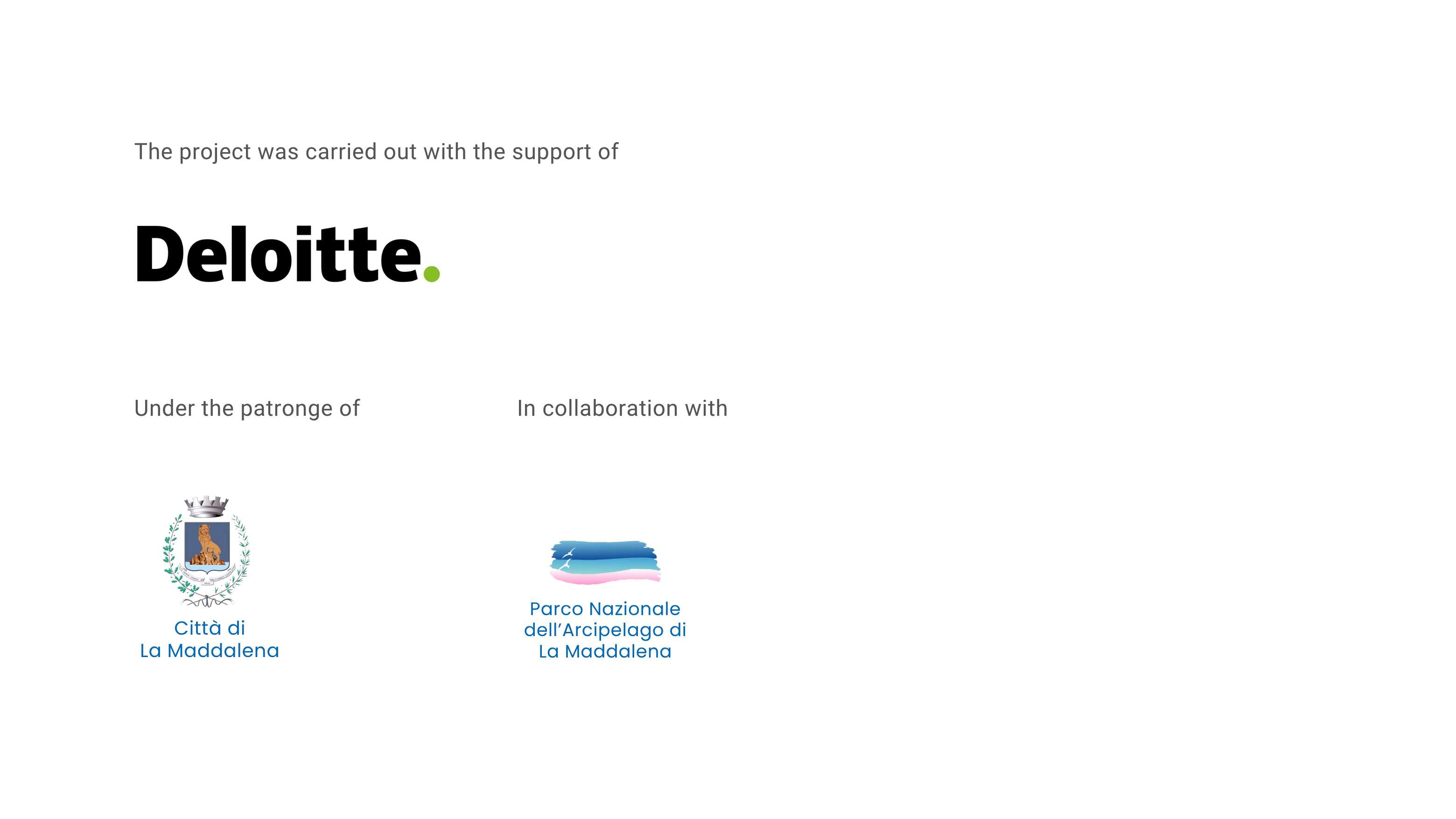Tartablu – The Marevivo Project for the Monitoring and Protection of Caretta caretta Sea Turtles in the La Maddalena Archipelago National Park
WHY THE PROJECT WAS LAUNCHED
The project was launched with the aim of monitoring, for the first time, sea turtle nests on selected beaches within the La Maddalena Archipelago National Park. In addition to this key biodiversity conservation initiative, the project includes collaboration with local fishermen to monitor accidental captures (bycatch) of Caretta caretta, as well as public outreach activities to inform and engage tourists and residents on the importance of protecting this endangered species. “Tartablu” is implemented with the support of Deloitte, in collaboration with the La Maddalena Archipelago National Park, and under the patronage of the Municipality of La Maddalena.
NESTING DATA IN ITALY
Due in part to climate change and rising sea temperatures, 2023 was a record-breaking year for Caretta caretta nesting in Italy. A total of 444 nests were reported, three times the number from the previous 2022 season. Of these, 19 were found in Sardinia, an unusual event that underscores the importance of choosing the La Maddalena Archipelago area for the implementation of the Tartablu project.
A few Facts about Caretta caretta
The Caretta caretta, or loggerhead sea turtle, is a remarkable species native to the Mediterranean Sea, easily recognized by its sturdy shell and golden colouring. Females return to their natal beaches to lay eggs, a vital process for the survival of the species.
Protecting the Caretta caretta requires joint efforts to reduce the impact of human activities and preserve marine ecosystems. Conservation measures, combined with public awareness initiatives, are essential to securing a sustainable future for this iconic marine species in the Mediterranean.
THREATS
Among the endangered species in the Mediterranean, the loggerhead turtle (Caretta caretta) faces numerous threats to its survival. These include accidental capture (bycatch), marine pollution, abandoned fishing gear, destruction of coastal habitats, disturbance on nesting beaches, and the effects of climate change. Fishing nets, in particular, represent a significant danger, often leading to serious injury or even death.

What the project involves
RESCUE AND CARE
Starting in August, project operators will periodically join fishing vessels to collaborate with fishermen in monitoring bycatch, the accidental capture of sea turtles during fishing activities. This initiative represents a valuable opportunity to work with the fishing industry in identifying strategic conservation measures for this endangered species. Turtles found in distress will be safely recovered using specialized equipment provided to the fishermen and transported either to the first aid center located in Caprera, managed by the La Maddalena Archipelago National Park, or to one of the regional rehabilitation centers for long-term care when necessary.
AWARENESS-RAISING
Environmental awareness is essential to help people understand the urgency and importance of preserving our environment. Educating the public about environmental challenges promotes critical awareness and encourages active and informed citizenship to build a more sustainable future. As part of the project, beach resorts will be engaged in the monitoring and protection of turtle nests, while a series of public awareness events will be organized for both residents and tourists, focusing on issues such as strandings and nesting. Most importantly, the initiative emphasizes hands-on field activities that translate awareness into concrete action.
BOARDING FISHING VESSELS TO MONITOR BYCATCH

WHAT YOU CAN DO
If you’re on the beach and lucky enough to see a turtle approaching to lay her eggs, observe from a distance. If you get too close or disturb her, she may become frightened and return to the sea without laying her eggs.
Are you a friend of the sea turtle?
Although sea turtles are marine animals that know no borders and travel across wide areas, they still need our help. There are many things you can do to support them, even from home.
6 Ways You Can Help
USEFUL NUMBERS
If you find turtle tracks on the beach, discover a nest, or come across an injured turtle at sea or on the shore, do not touch it, call immediately:
COAST GUARD 1530







